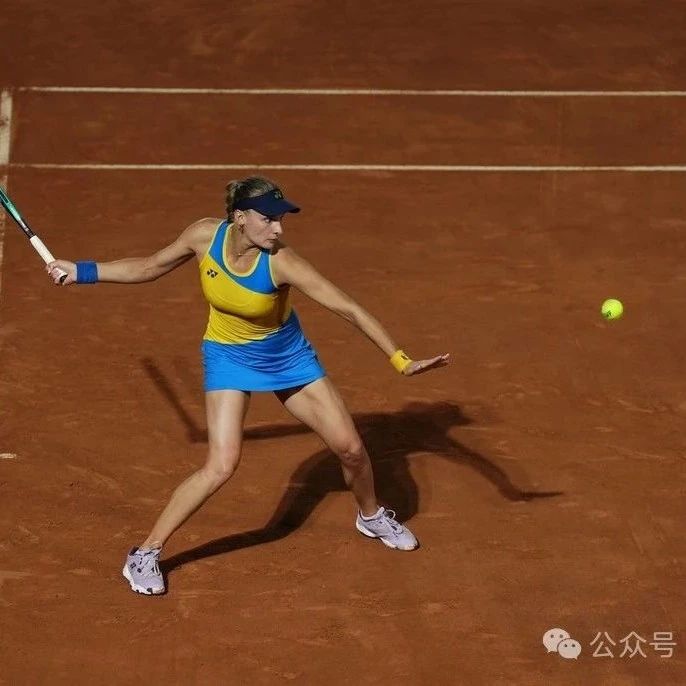Tennis Microscope: Continental Grip Details for Serving Technique
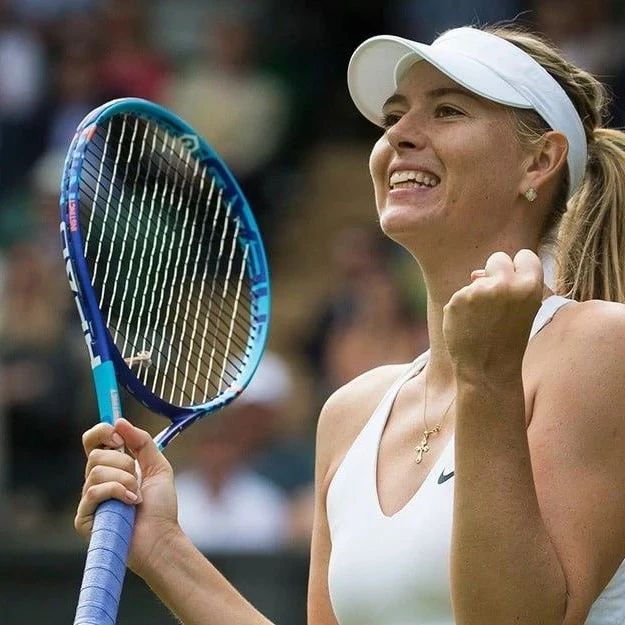
01
Writing Context
The core obstacle that amateur players often face in breaking through with their serving skills is their inability to use the correct grip technique.
How to build an advanced serving system rooted in grip technique is a key measure of a coach's teaching expertise.
From a teaching perspective, it’s challenging for coaches to supervise how students hold their rackets; developing proper racket-holding habits largely depends on the students themselves.
Here are two examples to illustrate the point: first, even after coaches repeatedly emphasize that players should use a continental grip for serving, most beginners still unconsciously "slip" the racket face at the moment of impact, subtly shifting their grip toward the Eastern style.
Second, after attempting a continental grip serve, players often fail to grasp the subtle differences between the continental grip used for serving and volleying, causing their index fingers to spread too widely and subsequently restricting forearm pronation.
The key to resolving grip issues lies in coaches helping students thoroughly understand the advantages and disadvantages of the continental grip for serving—only when students truly grasp the value of the correct grip and actively strive for improvement can they effectively monitor themselves during training, ultimately driving continuous refinement of their serving technique.
Additionally, if players fail to practice serving with a proper grip, not only will their serving technique remain stagnant, but their risk of shoulder and wrist injuries will also increase significantly.
This article addresses the common challenges players face with their serving grip, focusing on sound training principles and setting realistic goals tailored to the physical capabilities of amateur players. The aim is to help readers maximize their serving practice efficiency and achieve better results with less effort.
02
Details of the Continental Grip
If the trajectory of the serve depends on how the racket face interacts with the ball, then the player’s grip determines whether racket-face control can be achieved during the serving motion.
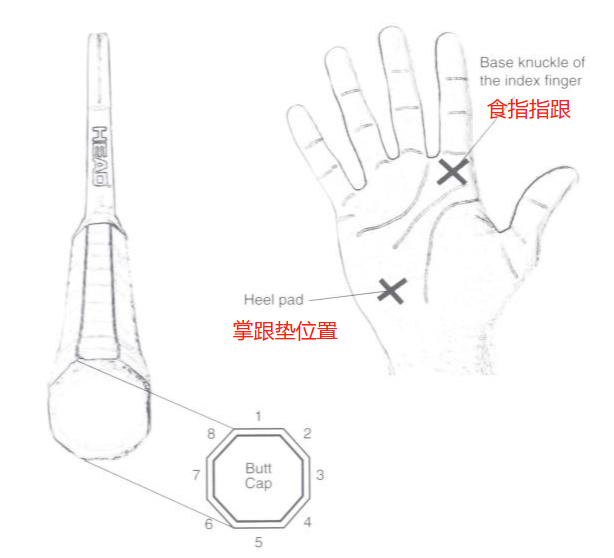
Grip Positioning Diagram
To start with the conclusion: When serving with a continental grip, place the heel pad on the 1 o'clock position, rest the base of your index finger "on top of" the 2 o'clock position, and ensure that your index and middle fingers don’t form an excessively wide angle.
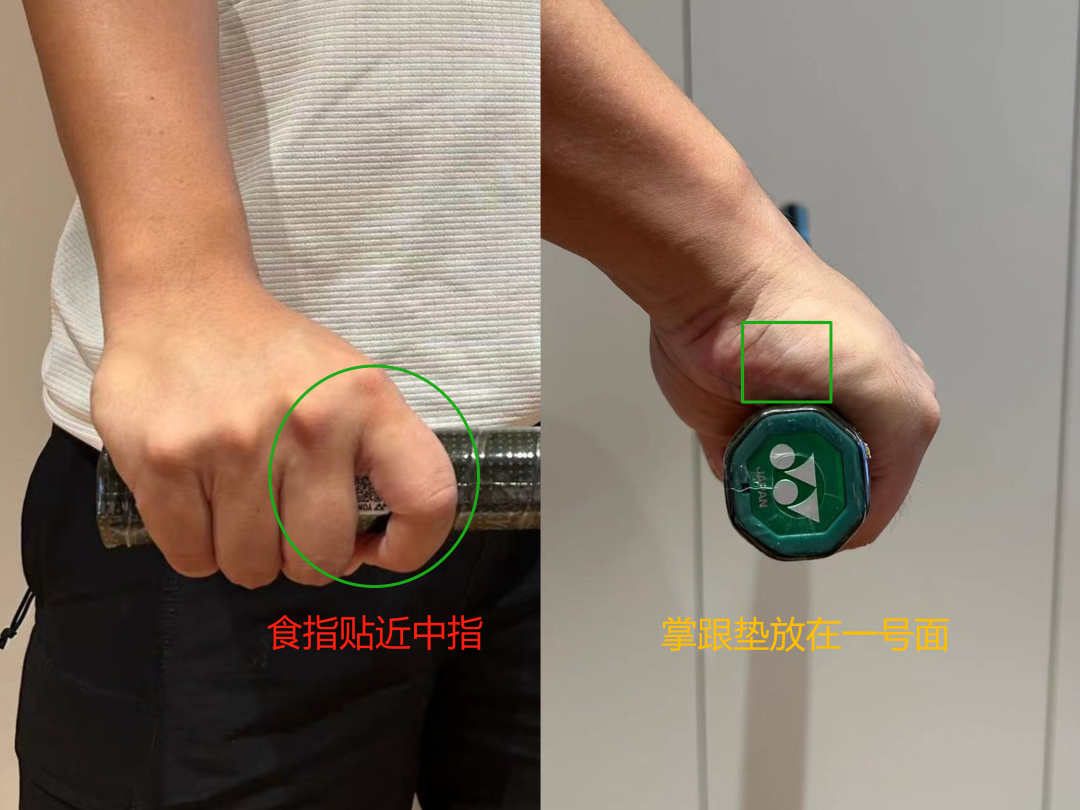
Diagram of a Continental Grip for Serving
Among these, the heel of the hand placement is the key to gripping the racket for serving. This is because only when the heel of the hand is firmly positioned on the 1 o'clock mark—and with the entire arm fully extended—can the forearm rotate freely to its maximum inward angle, directly boosting racquet head speed.
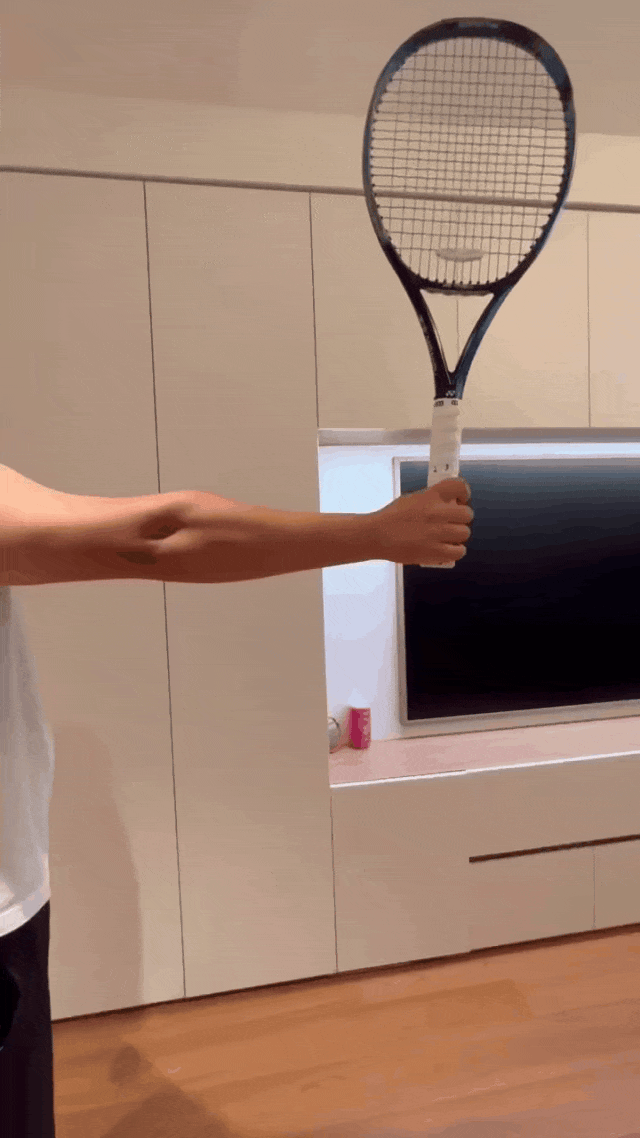
Fully press down on the clubhead, with the forearm rotating inward to the maximum extent.
If the heel pad deflects from side 1 toward side 2, the player’s other arm muscles will engage to stabilize the racket face as the forearm internally rotates. — A stiff arm, however, directly disrupts the transfer of power, not only sapping the force behind the serve but also significantly increasing the risk of arm muscle pain.
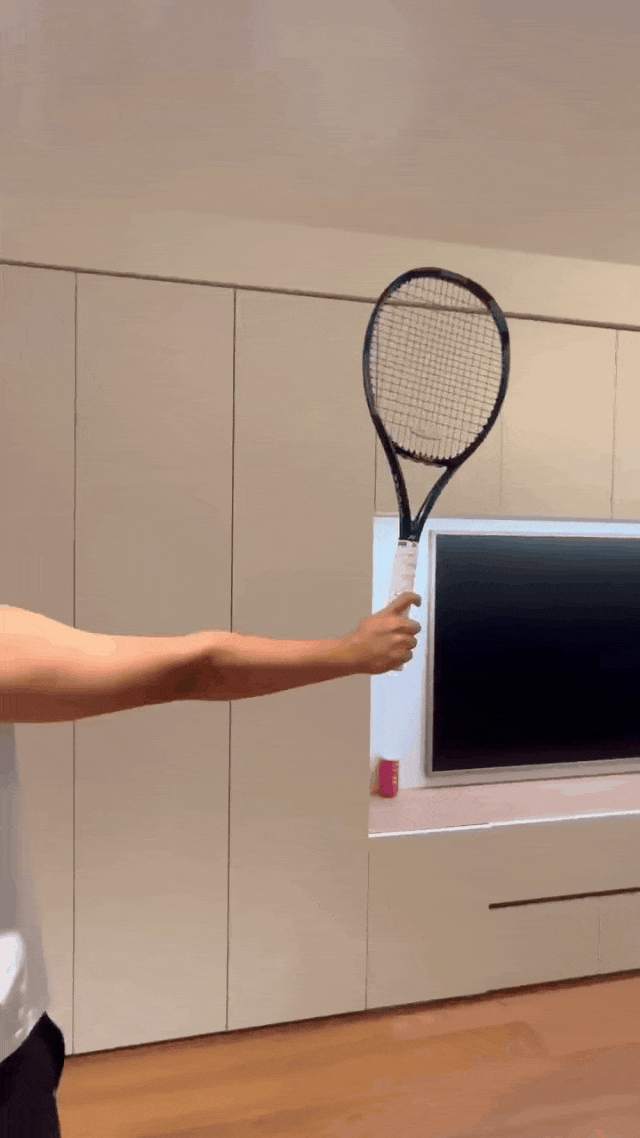
The head drop is insufficient, and forearm pronation is restricted.
In other words, the grip style determines the racquet face trajectory during a full forearm pronation motion.
03
The Difference Between Serve and Forehand Volley in the Continental Grip
When practicing the continental grip for hitting a volley, place the heel of your palm between the 1st and 2nd strings, keep your index finger as far apart from your middle finger as possible, and position the base of your index finger on the 2nd string.
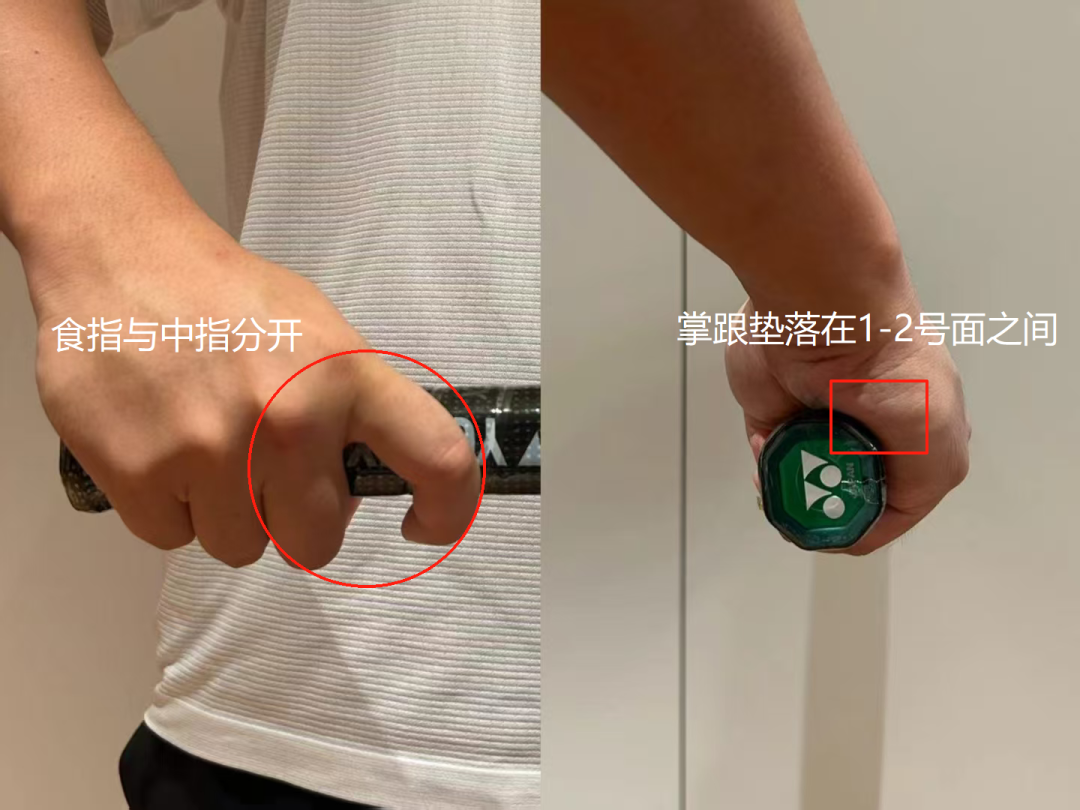
Diagram of the Continental Grip for a Volley
However, when serving, we place the heel of our palm on the 1st string, with the index and middle fingers close together—typically, the base of the index finger rests on the 2nd string.
With the same continental grip, the reasons for the differences in serving and volleying are as follows:
At the moment of the volley, we need to firmly grip the racket using the three fingers at the bottom, while the heel of the index finger helps push against the handle. This grip technique primarily strengthens support in the palm and wrist, minimizing wrist movement (to prevent the racquet head from dropping).
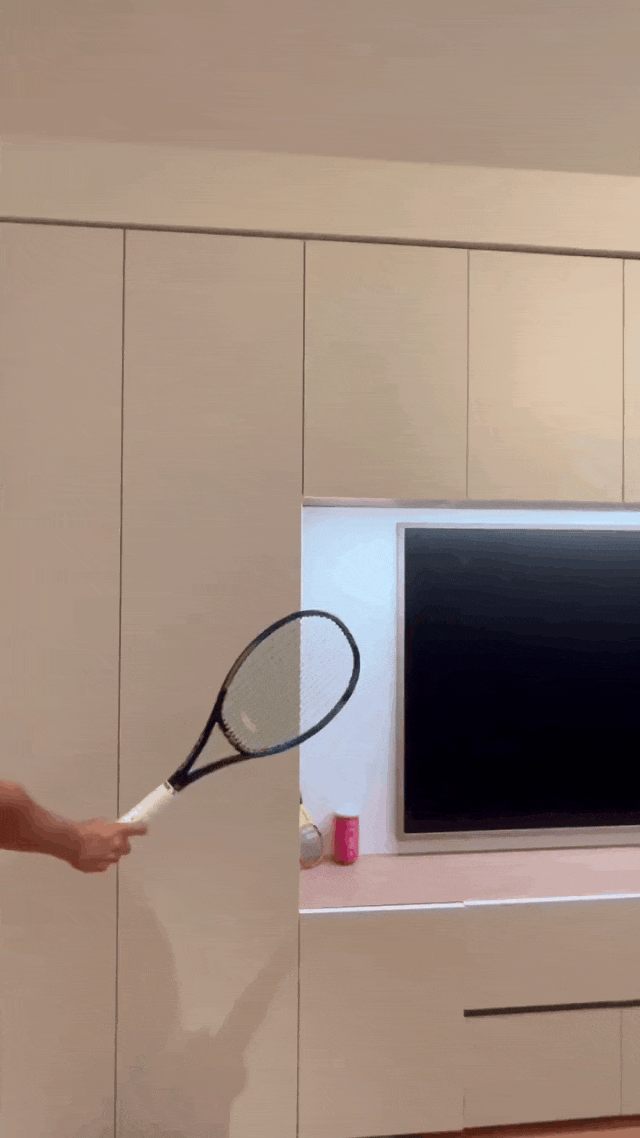
A volley requires a stable racket head.
When executing a flat serve, we still need to use the three fingers at the bottom of the hand to counteract the twisting motion of the racket, applying downward pressure on the handle with the full strength of the palm. The propelling action from the base of the index finger is weakened during a flat serve—if the index finger is spread too wide, as in a continental grip for volleys—this can lead to a loss of power transfer through the wrist.
When serving a spin ball, we once again leverage the propelling action of the base of the index finger, combining it with forearm pronation while simultaneously adding a wrist extension movement—where the base of the index finger helps guide the direction of the wrist extension.
Therefore, the main difference between the two continental grip styles lies in their distinct purposes: the volley emphasizes support from the palm and wrist, while the serve focuses on wrist flexibility and control.
04
The goal of grip practice
Improving your serving technique is a systematic process—it certainly can’t be achieved simply by refining your grip. That’s precisely why I repeatedly emphasize to my students the importance of "progressing step by step."
Therefore, grip practice must align with the appropriate objectives:
First, players need to mentally adjust to the unpredictable nature of the continental serve and first focus on finding the right rhythm for the toss.
Step two: Players should adjust their hitting zone to develop a habit of generating upward power, aiming to hit the ball as far as possible.
When practicing your grip, *never* let yourself get too aggressive—stand at the baseline and use only a forearm inward rotation to hit flat shots into the service box; otherwise, you’ll inevitably end up compensating with your body.
The key to landing a flat serve squarely in the service box lies in the rapid hip rotation during the swing. If improving just your grip allows you to land the ball in bounds, it’s worth considering whether shoulder joint compensation might be at play—players who rely on this technique often end up jumping when serving.
05
To conclude
Although the author has repeatedly emphasized the importance of "choosing the right racket for serving practice," some students still seem to take it lightly.
It's important to note that during the serve, players must always maintain control over the racket head. A lighter racket with a balance point closer to the handle (head-light HL) and lower swing weight is perfectly suited for serve practice.
Even if players can handle slightly heavier rackets during baseline shots and volleys, they should promptly swap to a different one as soon as they notice the racket head becoming unwieldy or their grip slipping during serve practice.
Remember, serve practice is about learning the motion pattern—don’t let your body adapt to the racket; instead, allow the racket to support and enhance your serving motion.
Only through serving practice, gradually mastering control over the racket head, can you slowly start to feel more relaxed—and ultimately improve the quality of your serves.
Related Articles

Decoding "The racket face is an extension of the hand"

Coaches' Self-Improvement: How to Leverage Writing for Effective Learning in the Internet Age
